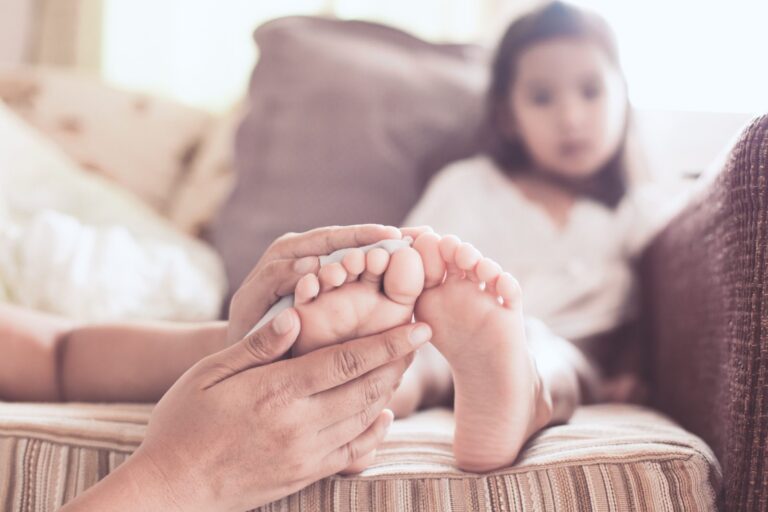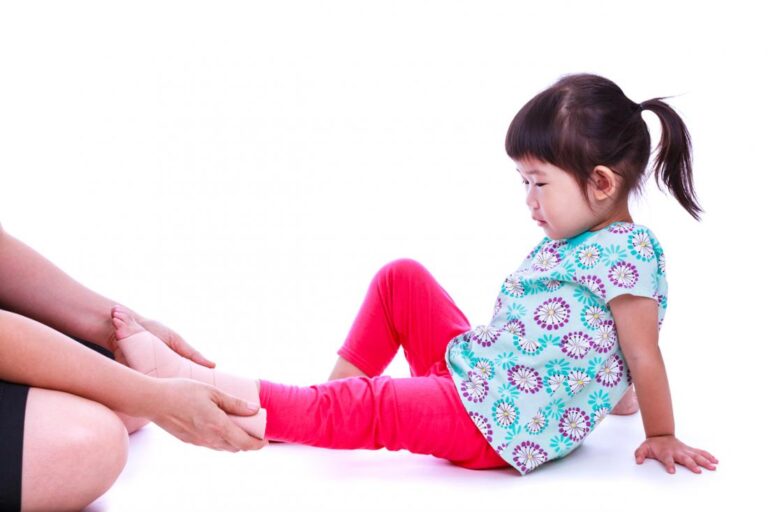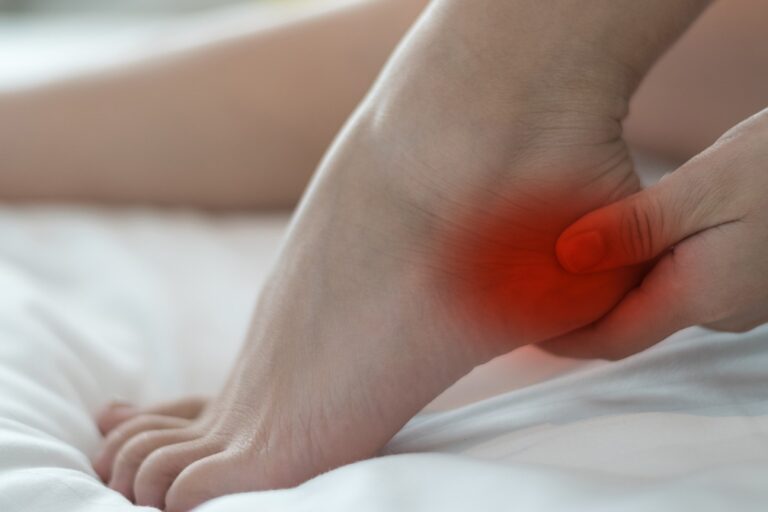SEVER’S DISEASE
Growing children and adolescents complain about heel pain. Parents usually ignore it thinking it is due to the high activity of the child. But, this can be due to Sever’s Disease, also known as calcaneal apophysitis.
Sever’s disease is a typical heel injury that occurs in youngsters. It is excruciating and caused by swelling of the growth plate in the heel. Kids can harm this growth plate through average weight-bearing action (movement performed while standing).

This is usually common among kids and adolescents actively participating in athletics especially running and jumping sports. These activities increase the risk of injury if not played with care. But, sometimes less active adolescents may also encounter Sever’s Disease, especially if they wear very flat shoes.
HOW DO YOU GET SEVER’S DISEASE?
Kids usually develop Sever’s disease during a growth spurt, when the muscles, tendons, bones, and ligaments develop rapidly. These bones and soft tissues develop and shift causing them to be weak against injury.
Children and adolescents enjoy running and jumping which puts stress on the Achilles ligament. These are the intense band of tissue connecting the lower leg muscle to the heel bone. This repeated stress results in swelling and pain in the growth plate where the Achilles ligament attaches to the rear of the heel. As kids age and the growth plate becomes solid bone, the heel and tendons can withstand more power.

CAN YOUR CHILD BE AFFECTED BY SEVER’S DISEASE?
Sever’s disease most normally affects youngsters between the ages of eight and 14 years, when growth spurts are starting. Sever’s disease incorporates youngsters and adolescents who:
- Often run and jump, especially on hard surfaces.
- Take part in high-impact sports, like gymnastics, volleyball, and basketball.
- Are bulky, overweight, or obese.
- Wearing shoes that don’t support your child’s feet
- Wearing inappropriate footwear for different activities.
CAN ADULTS ALSO BE AFFECTED BY SEVER’S DISEASE?
Adults are usually not affected by Sever’s Disease. Sever’s disease mainly affects children and adolescents.
Moreover, the pain caused by Sever’s disease is different compared to the pain caused by other foot conditions. Generally, heel pain in adults is reduced with activity. But, with Sever’s disease increase, inactivity tends to worsen the pain.

WHAT ARE COMMON SIGNS AND SYMPTOMS OF SEVER’S DISEASE?
If your child is suffering from Sever’s disease, he or she would commonly complain of having pain in the back of the heel. Usually, your child would tend to walk on their toes or walk with a limp due to pain in the back of the heel.
The symptoms of Sever’s disease are similar to those of plantar fasciitis or shin splints, yet the conditions aren’t connected. Symptoms of Sever’s disease include:
- Pain in one heel or both heels (most kids report torment in the two heels).
- Tenderness and pain worsen with activities (especially bouncing and running on hard surfaces) and improve with rest.
- Redness, swelling, and irritation in the heels.
- Stiffness in the feet when first waking up.
- Limping, or walking on tiptoes.
- Pain when the heel is squeezed on both sides.
- Foot Discomfort.
Sever’s disease can last until your kid is completely developed. When the growth plates close, the condition resolves itself.
HOW DO DOCTORS DIAGNOSE SEVER’S DISEASE?
Your kid’s indications will assume a major part in the finding. Your kid’s doctor will accumulate data about your child’s indications. They will similarly inspect your kid’s foot, pressing it at various focuses to see where it is agonizing. The specialist might crush the two sides of the rear of the heel to check whether it causes torment. This is known as the squeeze test.
The specialist may likewise arrange an x-ray or MRI to rule out different issues, like a crack. Even so, there is usually no difference in what can be seen in a heel x-ray of a child experiencing Sever’s disease-related pain, and that of another child of the same age who is pain-free. Thus, x-rays are by and large not used to analyze Sever’s sickness.
HOW WILL THE DOCTOR TREAT SEVER’S DISEASE?
Sever’s disease can be painful during the formative years, it doesn’t cause long-haul harm. Fortunately, the condition causes no drawn-out foot issues. Manifestations regularly disappear following a couple of months.
The best treatment is rest. Your youngster should stop or eliminate sports until the pain improves. Whenever they’re alright to get back to their game, have them develop their playing time step by step.

Your doctor may also recommend:
- Heel pads: Heel pads embedded in sport’s shoes can assist with retaining sway and assuage weight on the heel and lower leg.
- Wearing shoes with a slightly elevated heel: Elevating the heel might let some free from the tension on the development plate. Strong shoes and embeds lessen the weight on the heel bone. These can help to assume your youngster has another foot issue that disturbs Sever’s disease, like level feet or high curves.
- Stretching exercises: Stretches for the Achilles ligament can diminish weight on the heel, assist with assuaging pain, and ideally keep the disease from returning.
- Pain relievers and Ice packs: The doctor may prescribe nonsteroidal anti-inflammatory drugs (NSAIDs), such as ibuprofen or naproxen, to relieve the pain. Applying ice packs to the heel a few times a day for four or five days helps in reducing the swelling and pain.
In severe cases, the doctor may put a cast on the heel of your child and force it to rest. In situations where the pain is sufficiently terrible to slow down strolling, a “walker boot” may be expected to immobilize the foot while it recuperates.
CAN IT BE PREVENTED?
When your youngster’s development spray closures and they’ve arrived at standard size, their Sever’s disease won’t return. Up to that point, the condition can reoccur assuming your kid remains exceptionally dynamic.
A few basic advances can assist with forestalling it. Have your kid:
- Wearing supportive, shock-absorbing shoes.
- Stretching their calves, heels, and hamstrings.
- Do not overdo the training, and suggest plenty of rest, especially if your child begins to feel pain in their heel.
- Attempt to keep away from bunches of running and beating on hard surfaces.
- Assuming that they’re overweight, assist them with losing those extra pounds, which can increment tension behind them.
OUTCOME
It is to be expected for Sever’s disease to repeat. This commonly happens when a kid by and by increments sports exercises. Wearing games shoes that offer great help to the foot and impact point might assist with forestalling repeat.
Sever’s disease won’t return once a youngster is completely developed and the development plate in the heel has developed into strong bone.
If you or anyone you know is suffering from heel pain, our expert providers at Specialty Care Clinics will take care of your health and help you recover.
Call us on (469) 545-9983 to book an appointment with our specialists.
